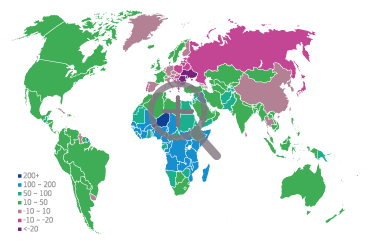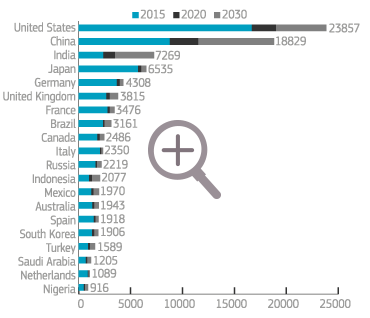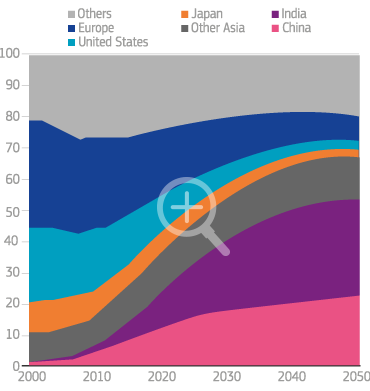

In the majority of today’s EU Member States as well as in the Western Balkans and Europe’s Eastern neighbourhood populations will shrink. Countries to the South and South-East of the Mediterranean will continue to experience demographic growth. By 2050, the UN’s Population Division estimates that Africa’s population will have reached 2.4 billion from 1.2 billion today.
Percentage of population change

In 2030, while the US will still be the largest economy, it is projected that the economies of individual EU Member States will lag behind today’s emerging economies.
Billion USD

Note: 2020 and 2030 data are projected.
Source: World Bank World Development Indicators.
Middle class in the developing world is forecast to expand substantially. The share in global consumption of Asian emerging economies’ middle class alone will grow to over 60% by 2050, dwarfing the US and EU share. This will have considerable implications for environmental sustainability. It could also lead to significant resource constraints, thus putting increased pressure on the consumption models in developed countries.
Share in percentage

Source: Kharas, H. (2010), The Emerging Middle Class in Developing Countries, OECD.